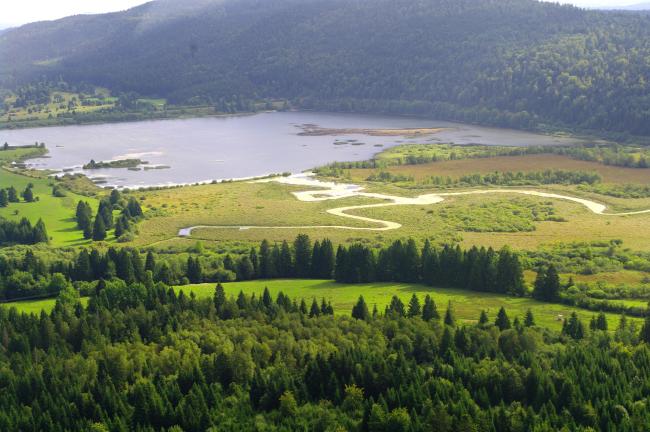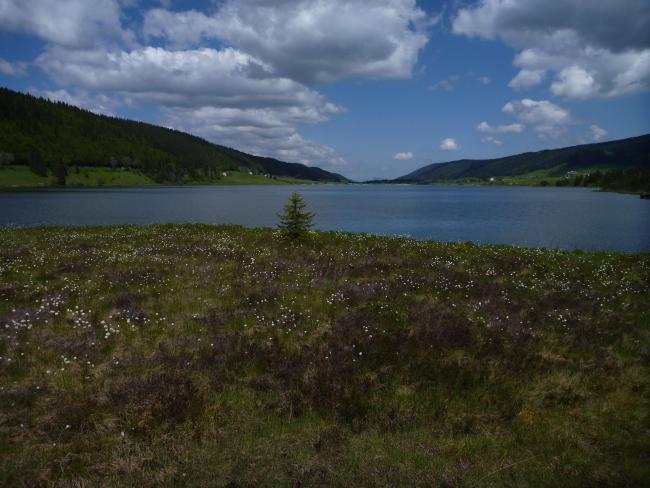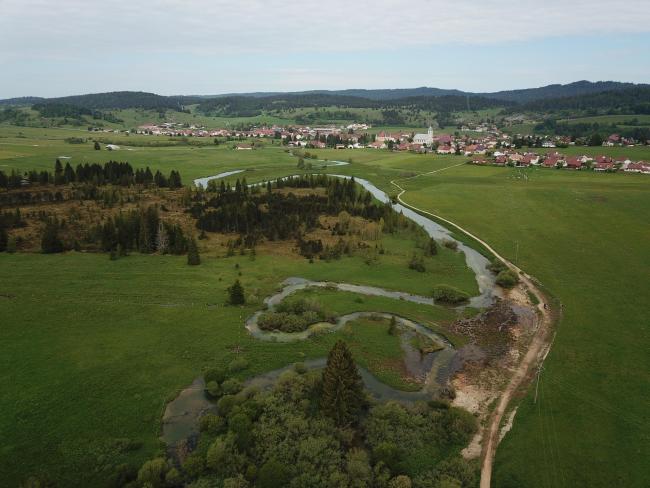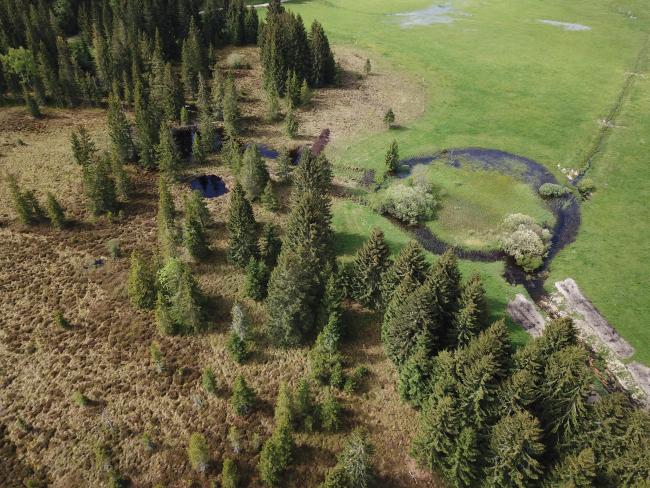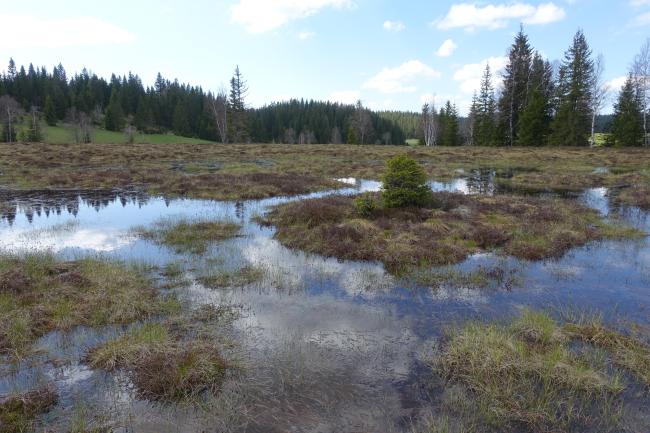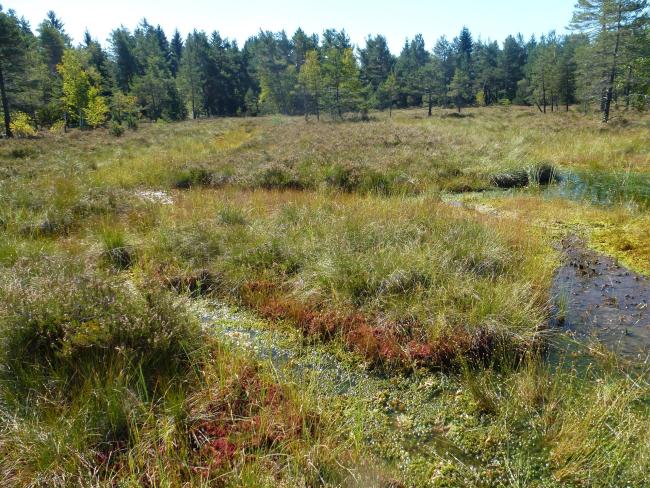Tourbières et lacs de la Montagne jurassienne
Tourbières et lacs de la Montagne jurassienne
- Country:
- France
- Site number:
- 1266
- Area:
- 12,156.0 ha
- Designation date:
- 02-02-2003
- Coordinates:
- 46°42'08"N 06°08'12"E
Carousel
CarouselMaterials presented on this website, particularly maps and territorial information, are as-is and as-available based on available data and do not imply the expression of any opinion whatsoever on the part of the Secretariat of the Ramsar Convention concerning the legal status of any country, territory, city or area, or of its authorities, or concerning the delimitation of its frontiers or boundaries.
The Site extends between the towns of Pontarlier and Saint-Claude in the Jura mountain range. Originally named “Bassin du Drugeon” when it was designated in 2003, the Site’s area was extended in 2021 from under 6,000 hectares to cover over 12,000 ha. It now includes large emblematic peat bogs such as those in the Drugeon basin, the valleys of the upper Doubs and Orbe Rivers, and the valley of Chapelle-des-Bois and Bellefontaine. Its 18 lakes and 2000 ha of peatlands represent about 40% of the area of peatlands in the Jura massif. The limestone subsoil allows a juxtaposition of alkaline and acid peatlands which is unique in France for its size. The Site provides numerous habitats of importance for a variety of nationally or internationally protected species, from plants and fungi to dragonflies, butterflies, fish, birds, amphibians and reptiles. Two thirds of the national population of the common snipe (Gallinago gallinago) nest here, and the Site is also an important spawning ground for the northern pike (Esox lucius), the lavaret (Coregonus lavaretus), lake trout (Salmo trutta) and the white-clawed crayfish (Austropotamobius pallipes). In the past the peat habitats were greatly modified for the exploitation of peat, the development of forestry and agricultural activities, but peatland restoration activities have been successfully implemented. The Site is nonetheless still sensitive to droughts, and to pollution from the surrounding agricultural land.
- Arrêté Préfectoral de Protection de Biotope - Bassin du Drugeon
- Arrêté Préfectoral de Protection de Biotope - Tourbière et prairies des Placettes
- Arrêté Préfectoral de Protection de Biotope - lac Saint-Point
- Arrêtés Préfectoraux de Protection de Biotope - Ecrevisse à pattes blanches et espèces patrimoniales associées
- Réserve Naturelle Régionale - RNR des Tourbières de Frasne-Bouverans
- Réserve Naturelle Régionale - Tourbières de Frasne-Bouverans
- Réserve Naturelle nationale - Lac de Remoray
- Réserve naturelle Régionale - Seigne des Barbouillons
- EU Natura 2000
- FR1266RIS_2102_fr.pdf
- FR1266RISformer_170213.pdf
- FR1266RISformer2002_EN.pdf
- FR1266RISformer_191009_1907_fr.pdf
- FR1266_map200228.pdf
- FR1266_map201210.pdf
- FR1266_map201210_1.pdf
- FR1266_taxo160914__HabitatsFauneFlore.pdf
- FR1266_taxo200228.pdf
- FR1266_ECD170612__FSDDrugeon.pdf
- FR1266_ECD200228.pdf
- FR1266_ECD200228_1.pdf
- FR1266_ECD200228_2.pdf
- FR1266_ECD200228_3.pdf
- FR1266_ECD200228_4.pdf
- FR1266_ECD200228_5.pdf
- FR1266_ECD200228_6.pdf
- FR1266_ECD200228_7.pdf
- FR1266_ECD200228_8.pdf
- FR1266_ECD200228_9.pdf
- FR1266_ECD200228_10.pdf
- FR1266_ECD200228_11.pdf
- FR1266_ECD200228_12.pdf
- FR1266_mgt200228.pdf
